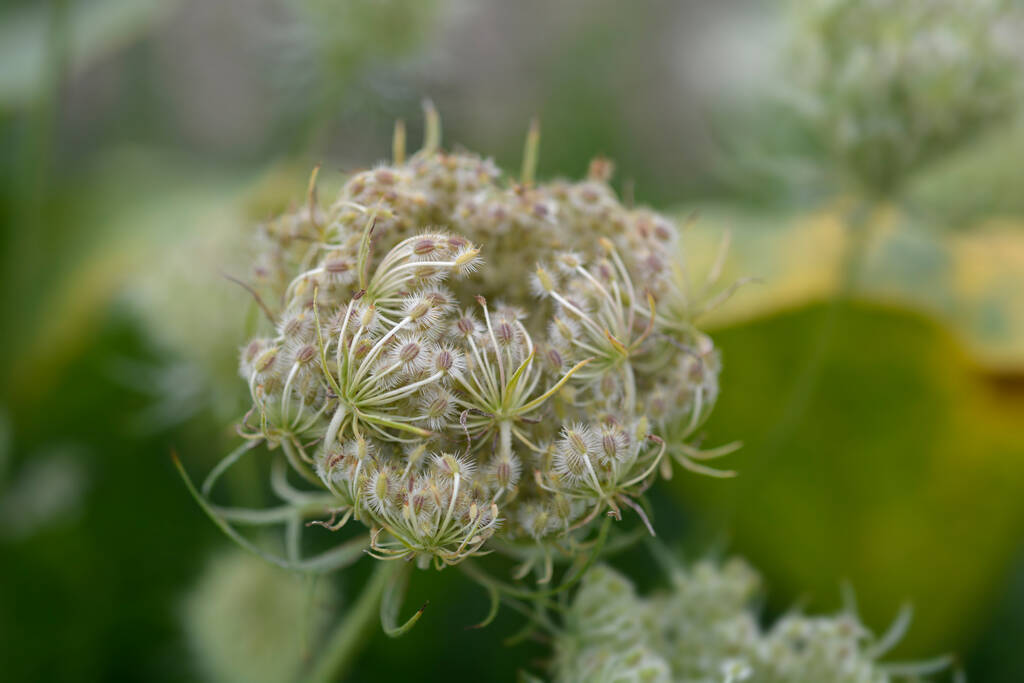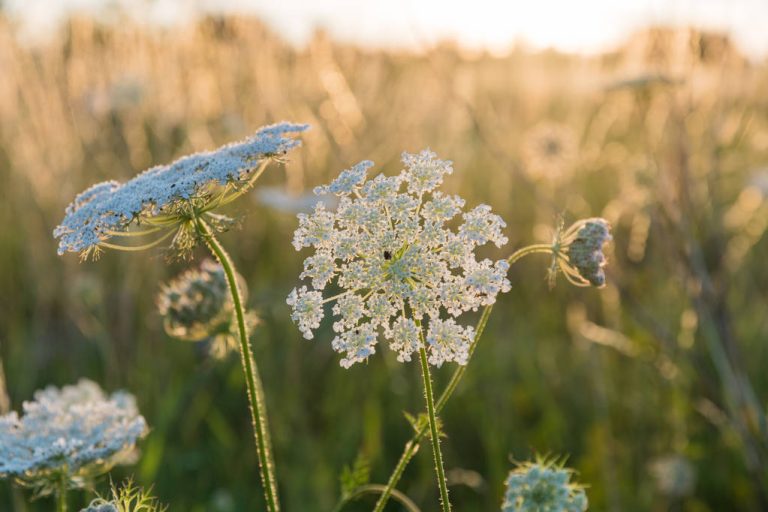As the archetype of today’s carrot, the wild carrot is also an important food source for insects. The white flowers attract bees, butterflies and beetles. You can read here how to plant the wild carrot and how you can use it.
The wild carrot is the archetype of today’s carrot. It belongs to the umbelliferae family and is widespread in large parts of Europe, North Africa and Asia. It usually grows on roadsides or embankments. You can eat their roots just like those of cultivated carrots, but wild carrots are significantly smaller and less tender. In addition, the wild carrot has a long tradition as a medicinal plant.
Read here how to cultivate wild carrots in your garden and how you can use them.

Wild carrot in your garden
The wild carrot is the archetype of a classic example of old types of vegetables. If you grow them in your garden, you make a double contribution to maintaining the diversity of varieties: in addition to the types of vegetables that you get, the original form of the carrot with its white umbels offers valuable food for insects. According to NABU, the wild carrot is very popular with many insects. These include wild bees, sawflies, bugs, beetles and flies. Some caterpillars, such as those of the swallowtail, particularly value the wild carrot as a food source. It is therefore also a good addition to an insect-friendly garden.
You should consider the following points so that the wild carrot feels comfortable in your garden.
Location: The wild carrot prefers a sunny location, but also thrives in semi-shade.
Floor:
The original form of the carrot is quite adaptable as far as soil conditions are concerned.
In nature, it grows on dry, calcareous and well-drained soils.
Planting and caring for wild carrots
The wild carrot is usually a biennial herbaceous plant. In the first year, it forms its leaves close to the ground, which are arranged in a circle. The wild carrot only flowers in the second year. It grows between 10 and 30 centimeters high. Although the roots contain hardly any carotene and are therefore white instead of orange, their scent is strongly reminiscent of carrots.
If you want to plant wild carrots in your garden, we recommend using organic seeds. In this way you avoid genetic engineering and support the diversity of varieties.
How to plant wild carrots:
The wild carrot is one of the so-called cold germs. It therefore needs a longer cold period at the beginning in order to be able to germinate.
From April you can sow the wild carrot directly into the bed. If you want to cultivate them as a vegetable, a planting distance of about 40 centimeters is recommended. For a wild flower meadow, you can simply scatter the seeds widely.
How to care for the wild carrot:
Until the seeds start to germinate, be sure to keep them moist.
In addition, you only need to water them during long periods of drought.
Since the wild carrot is used to nutrient-poor soil, you do not need to fertilize it.

This is how you use the wild carrot
From a culinary point of view, the wild carrot is particularly valuable because you can use all parts.
Root:
If you want to process the roots of the wild carrot, you should harvest them at the end of the first year. Once the plant has started flowering, the roots become woody and very sharp. In the first year, on the other hand, they store sugar and are particularly sweet.
You can eat them raw or cook them like regular carrots.
leaves and flowers:
You can use the young leaves to prepare wild herb salad, process them like spinach or use them as soup greens.
It is best to harvest the leaves in spring, between April and June, before the stems harden.
The young flowers are also edible. You can use them to decorate dishes. When cooked, they add a pleasant flavor to your dishes.
Fruit:
The fruits or seeds of the plant are rarely used. Basically, you can use them as a spice similar to aniseed or fennel, which come from the same family.
The seeds are ready for harvest from September to October.
Due to its diverse effects, the wild carrot is also considered a medicinal plant. It is traditionally used, among other things, for digestive problems or to regulate menstruation. Here, too, all parts of the plant are used.
According to a study from 2017, the wild carrot also has other healing properties:
antioxidant
anti-inflammatory
conducive to wound healing
hypoglycemic
lowers cholesterol levels.
Tip: If you collect the wild carrot in nature, you can recognize it by its characteristic dark spot in the middle of the light flowers. This spot has also given it the name “carrot”. It is said to attract insects and thus help with pollination. But beware: There are some doubles of the wild plant, such as the poisonous dog parsley, with which you should not confuse the plant.

